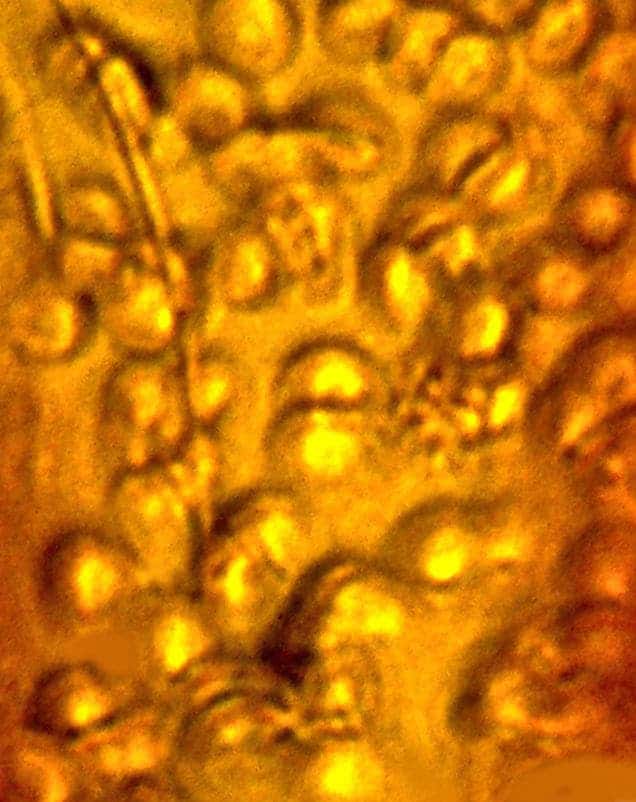The oldest fossilized red blood cells from a mammal were found in the belly of a blood hungry tick which became fossilized in amber. The amber is thought to be 20-30 million years old.

The specimen was sourced from a mine in the Dominican Republic and described by entomologist George Poinar Jr of Oregon State University who cracked the amber open and analyzed the tick under a microscope. Though this vampire feasted on its last meal millions of years ago, there’s a lot the scientists could learn by analyzing the fossil. It helped a lot that the insect was preserved in pristine condition almost as if it was treated in a laboratory beforehand.
For instance, the blood clearly belonged to an ancient mammal, most likely a monkey based on the size of the erythrocytes and the proximity to tree sap. It’s easy to imagine how a peer groomed the bitten monkey, then flung the pest away straight in some sap where it miraculously became preserved against the elements for millions of years. These things are very rare but can happen.
Two punctures on the tick’s back seem to support this story, as reported in the Journal of Medical Entomology.
“These two tiny holes indicate that something picked a tick off the mammal it was feeding on, puncturing it in the process and dropping it immediately into tree sap,” said Poinar.
“This would be consistent with the grooming behavior of monkeys that we know lived at that time in this region. The fossilized blood cells, infected with these parasites, are simply amazing in their detail. This discovery provides the only known fossils of Babesia-type pathogens.”

That’s not all. Inside the same tick the researchers found the oldest tick-borne parasite in the world, Babesia microti. The same natural embalming process for which amber isfamous made the parasite stand out clearly within the red blood cells.
The parasite is still alive today and is known for causing babesiosis, a disease whose symptoms resemble those of malaria and can sometimes prove fatal to humans. A related parasite is particularly cumbersome when it infects livestock causing Texas cattle fever. This spring, an outbreak of cattle fever forced authorities to enforce quarantine over 500,000 acres of land in Texas.
“The life forms we find in amber can reveal so much about the history and evolution of diseases we still struggle with today,” Poinar said. “This parasite, for instance, was clearly around millions of years before humans, and appears to have evolved alongside primates, among other hosts.”






